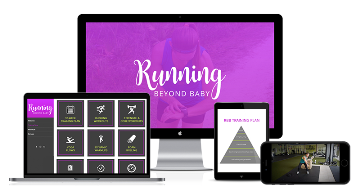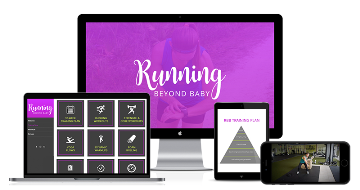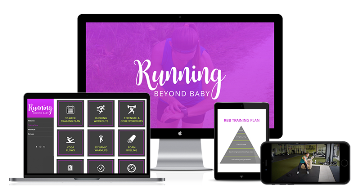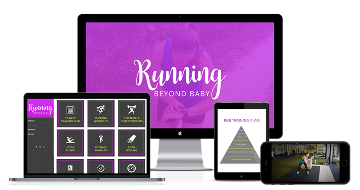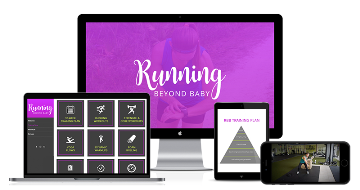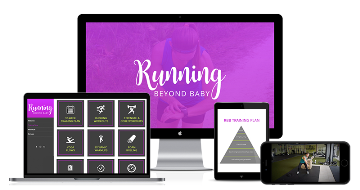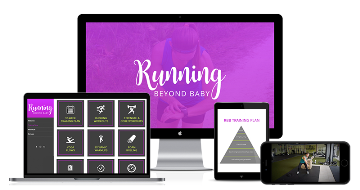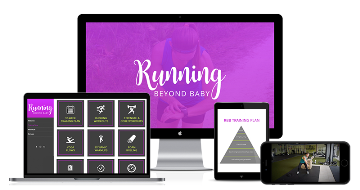When you begin to take up any hobby, you’ll want to equip yourself with all the right tools. For runners, it’s easy—all you ever really need is a good pair of shoes. But do not be mistaken, as many factors play into finding the shoe that best fits you.
Unfortunately, many people walk into shops not knowing what to look for and ultimately end up wasting their money on pairs that don’t work for them. When finding your first pair, a few questions should come to mind – the first and most important being – just how tight should running shoes be anyway?
Our Top Pick For Running Program for Moms
Signature Running Program for Moms!
Learn More
How Tight Should Running Shoes Be: Other Questions for First-Timers
Many first-timers make the all-too-common mistake of purchasing shoes that are snug on their feet. The assumption is that tight-fitting shoes offer stability and better control, but in actuality, a tight fit can lead to bruised up toenails and bad blisters.
The best fit allows enough room in the front for you to wiggle your toes. A common trick is to pretend you’re playing the piano with your toes—if you can’t do it, then your shoes are probably too tight for you.
Aside from fitting for length, make sure your feet aren’t wider than your shoe – a good way to test this is to ensure that your little toe stays within the insole when you’re standing.
The heel is another area to test for comfort. Make sure that even when your shoes are all laced up, you can still insert your foot without any trouble.
So, how tight should running shoes be? Make sure they aren’t too snug lengthwise, they allow enough room to wiggle your toes, and the heel is neither too tight or too loose.
But that shouldn’t be the first and last thing to cover before heading out to bag a pair. If words like stability and cushioning are unfamiliar to you, you might want to brush up on the concepts first.
What is Pronation?
You’ll hear this word tossed around in specialty shops and among seasoned runners. Though some debate that it shouldn’t be much of an issue, figuring out the pronation of your foot can be crucial to finding a shoe that fits perfectly.
Pronation is the way that your foot inwardly moves as you hit the ground with each stride. It’s the way that your foot “rolls” across the ground with each step. There are different types of pronation, and wearing a shoe that doesn’t match the type of pronation your foot has can mess up your balance and put you in pain.
Neutral pronation is when your foot is capable of rolling inward, or pronating, absorb the shock and support the weight of your body, and allow for a push off that is distributed throughout the front part of your foot. People with neutral pronation have normal-sized arches. This does not cause a lot of injuries compared to the two other types of pronation.
Under-pronation is when the foot does not “roll” enough as it lands on the ground. This is common for people with high arches. Under-pronation causes a lot of pressure on the small toe and the outside of the foot, leading to injuries like plantar fasciitis and ankle strain.
Over-pronation, on the other hand, is when the foot rolls an excessive amount, meaning there is a problem with shock absorption and stabilization. This is common for people with low arches or flat feet. A lot of stress is placed on the big toe, causing bunions and calluses to form.
How Much Cushioning Do I Need?
There’s a lot of debate surrounding what cushioning is best. Some runners prefer maximalist shoes or those that have super-cushioned soles. Fans of the maximalist shoe argue that they help lower the impact of each stride, meaning it provides overall comfort and protection for your feet and knees.
Meanwhile, proponents of the minimalist shoe say that, as humans were born to run barefoot, there is not much need for embellishments and additional support.
The answer to the question of cushioning depends on you and your genetic makeup. The amount of cushioning you need depends on many factors including, but not limited to, your body weight, your age, your running experience, and your balance.
The best thing you can do to find out what cushioning suits you is just to try out a pair and see if you’re comfortable enough in it.
When is the Best Time to Shop?
It may be an odd question to even consider, but as it turns out, asking when to shop is almost as integral as asking the question of how tight should running shoes be.
Time of day plays a big part in foot size – your feet expand and swell slightly as the day progresses, meaning that your feet will be at their largest in the evening. So, while it may seem like a good idea to get your shopping done first thing in the morning when it comes to getting your running shoes right, it’s best to shop at the end of the day.
When Should I Buy A New Pair?
It may seem odd to be asking about getting a new pair just as you’re buying your first one. But it’s important to know the right time to give them up, no matter how attached you get to your firsts.
People have their reasons for getting attached to their first pair of shoes – sentimental value, familiarity, and even just the sheer cost of a good pair of shoes. But wearing your shoes out to the point where they’re unrecognizable can pose some health hazards for you.
The best way to tell if a shoe is past its prime is if you’re experiencing pain that you haven’t felt before. Pain in the ankles and feet are the most common but do not ignore lower back and knee pain either.
By the time you’ve worked out your shoes, you will be able to tell what kind of pain is unusual and which is your standard runners’ wear and tear.
Obviously, soles that have lost their rubber, cracks in the heel, and shoes that “talk” are also signs that they’re begging to be replaced.
Our Top Pick For Running Program for Moms
Signature Running Program for Moms!
Learn More

